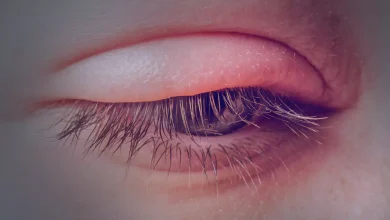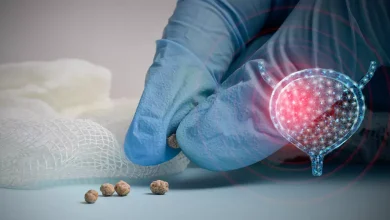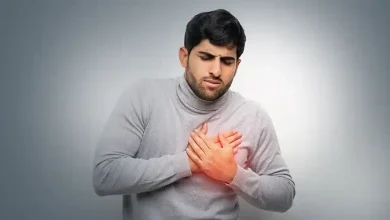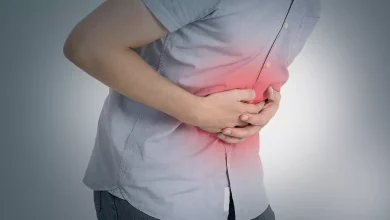What are Gallstones?

What are Gallstones?
Gallstones are formed because of hardened deposits of bile. The digestive fluid produced in your liver and stored in your gallbladder is known as bile. While you are eating, your gallbladder gets contracted which empties bile into your small intestine. The size ranges from as small as a grain of sand to as big as a golf ball. Some people might develop just one gallstone, while others might develop several gallstones at the same time. People experiencing symptoms from their gallstones normally need gallbladder removal surgery. Gallstones that don’t lead to any signs and symptoms usually don’t require treatment.
What are the Types of Gallstones?
The types of gallstones that might form in the gallbladder include:
– Cholesterol gallstones
It is the most common type of gallstone, known as a cholesterol gallstone, which is usually yellow in colour. Primarily these gallstones are composed of undissolved cholesterol, but they might contain other substances also.
– Pigment gallstones
These are dark brown or black stones that form when your bile contains a large amount of bilirubin.
What are the Symptoms of Gallstones?
Many times, gallstones might not cause any signs or symptoms. If a gallstone lodges in a duct causing a blockage, then it may cause signs and symptoms that may include:
– Sudden and quick intensifying pain in the upper right portion of your abdomen
– Sudden and rapidly intensifying pain in the centre of your abdomen, beneath your breastbone
– Back pain between your shoulder blades
– Pain in your right shoulder
– Nausea
– Vomiting
– Pain because of gallstones might last several minutes to a few hours.
What are the Causes of Gallstones?
The cause of the formation of gallstones is not clear but doctors think gallstones might form when:
– Your bile contains high levels of cholesterol
Usually, your bile contains enough chemicals that can dissolve the cholesterol excreted by your liver. But if your liver produces more cholesterol than your bile can dissolve, the excess cholesterol might develop into crystals and ultimately into stones.
– Your bile contains a high amount of bilirubin
Bilirubin is a chemical that’s excreted when red blood cells are broken down by your body. Some specific conditions can result in your liver producing too much bilirubin, like biliary tract infections, liver cirrhosis, and some blood disorders. The excess bilirubin might lead to gallstone formation.
– Your gallbladder is not emptying correctly
If your gallbladder is not empty completely or in enough amount, bile might become very concentrated, leading to the formation of gallstones.
What are the Risk Factors of Gallstones?
Risk factors that might contribute to the formation of gallstones may include:
– Being woman
– If you are 40 or older
– If you are a Native American
– If you are a Hispanic of Mexican origin
– Being obese
– Being sedentary
– If you are pregnant
– Having a high-fat or high-cholesterol diet
– Having a low-fibre diet
– Had a family history of gallstones
– Having diabetes
– Suffering from certain blood disorders, like leukaemia or sickle cell anaemia
– Losing weight quite rapidly
– Taking medications containing oestrogen, including hormone therapy drugs or oral contraceptives
– Has a liver disease
What are the Complications of Gallstones?
Complications of gallstones might include:
– Inflammation of the gallbladder
When a gallstone becomes lodged in the neck of the gallbladder, it can result in inflammation of the gallbladder (cholecystitis). Cholecystitis can cause fever and severe pain.
– Blockage of the common bile duct
The tubes (ducts) through which bile flows from your gallbladder or liver to your small intestine can be blocked by gallstones which may cause severe pain, bile duct, and jaundice.
– Blockage of the pancreatic duct
The pancreatic duct is a tube running from the pancreas and is connected to the common bile duct just before going into the duodenum. Pancreatic juices, which help in digestion, flow via the pancreatic duct.
A gallstone might result in a blockage in the pancreatic duct, causing inflammation of the pancreas (pancreatitis). Pancreatitis leads to severe, constant abdominal pain which generally requires hospitalisation.
– Gallbladder cancer
People with gallstones are at increased risk of developing gallbladder cancer.
How Gallstones are Diagnosed?
Your doctor will first do a physical exam and then may prescribe tests to diagnose gallstones including:
– Blood tests
It’s done to detect signs of infection or blockage, and for ruling out other conditions.
– Ultrasound
It creates images of the inside of your body which help doctors to detect gallstones.
– CT scan
Specialised X-rays help your doctor see inside your body, including your gallbladder, and check for gallstones.
– Magnetic resonance cholangiopancreatography (MRCP)
A magnetic field and pulses of radio waves are used here to create pictures of the inside of your body, including your liver and gallbladder which help doctors to detect gallstones.
– Cholescintigraphy (HIDA scan)
This test is done to see whether your gallbladder is squeezing correctly. A harmless radioactive material is injected into your body that makes its way to the organ. Then its movement is watched which helps to diagnose cholecystitis (inflammation of the gallbladder), a condition that occurs because of gallstones.
What are the Treatment Options Available for Gallstones?
A large number of people with gallstones might never require treatment because they don’t show any symptoms and will never need treatment. Your doctor will decide if treatment for gallstones is needed based on your symptoms and the results of diagnostic tests.
If gallstone signs and symptoms develop in the future, you can have treatment.
Treatment options for gallstones include:
– Surgery to remove the gallbladder (cholecystectomy)
Your doctor might prescribe surgery to remove your gallbladder since gallstones might recur frequently. Once your gallbladder is removed, bile flows directly from your liver into your small intestine and is not stored in your gallbladder.
You don’t require your gallbladder to live, and your ability to digest food is not affected because of gallbladder removal but it might cause diarrhoea, which is normally temporary.
– Medications to dissolve gallstones
Medications might be given which you need to take orally and they help to dissolve gallstones. However, it might take months or years of treatment to dissolve your gallstones in this treatment procedure, and gallstones will likely recur if treatment is stopped.
Sometimes medications usually don’t work and are reserved only for people who can’t undergo surgery.
Living with Gallstones
Gallstones are common, and most people with them won’t notice any symptoms or complications of them. If they are present in your gallbladder, you’ll probably never know that you have gallstones but once they start to move, they might create health problems. These small, pebble-like pieces can do a lot of harm when they get into the tiny spaces of your delicate biliary system. A gallbladder attack can be severely painful and scary, particularly if you didn’t know you had gallstones to start with. Surgery is the best treatment option to get rid of gallstones.
Whom to Consult
If you notice symptoms of gallstones especially pain in your abdomen then you should visit your doctor and get yourself diagnosed. Your doctor will examine if the pain is because of gallstones or some other underlying condition. After getting diagnosed, if it’s because of gallstones, your doctor will prescribe surgery to remove your gallbladder to treat gallstones. This surgery is not a serious one and due to medical advances today, this surgery is quite effective to treat gallstones without having too much complications.






